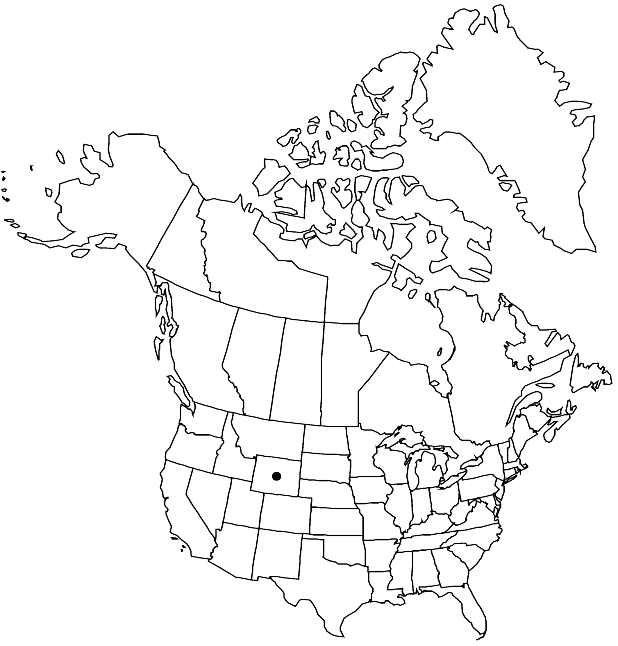Boechera fructicosa
Novon 13: 385. 2003.
Perennials; short-lived; apomictic; caudex usually not woody. Stems 3 to many per caudex branch, arising from margin of rosette near ground surface, 3.5–6 dm, pubescent proximally, trichomes short-stalked, 2–4-rayed, 0.2–0.3 mm, glabrous distally. Basal leaves: blade oblanceolate, 3–7 mm wide, margins dentate, ciliate proximally, trichomes (simple), to 0.3 mm, surfaces pubescent, trichomes short-stalked, 4–8-rayed, 0.05–0.2 mm. Cauline leaves: 5–10, not concealing stem; blade auricles 0.5–1 mm, surfaces of distalmost leaves glabrous. Racemes 10–18-flowered, usually unbranched. Fruiting pedicels divaricate-descending, straight, 5–10 mm, glabrous. Flowers divaricate-ascending at anthesis; sepals pubescent; petals lavender, 4–6 × 1–1.5 mm, glabrous; pollen spheroid. Fruits divaricate-descending, not appressed to rachis, not secund, curved, edges parallel, 4–6 cm × 1.5–1.8 mm; valves glabrous; ovules 60–70 per ovary; style 0.1–0.4 mm. Seeds uniseriate, 1.5–2 × 1–1.3 mm; wing distal, ca. 0.1 mm wide.
Phenology: Flowering Jun–Jul.
Habitat: Dry, disturbed soil
Elevation: ca. 2000 m
Discussion
Boechera fructicosa is known only from the type collection (A. & E. Nelson 5681) taken near Undine Falls in Park County. Multiple plants are represented (comprising the holotype and four isotypes), though one specimen with the same number at RM is B. stricta. Although the exact parentage of this apomictic hybrid remains in doubt, it is virtually certain that B. microphylla contributed at least one genome.
Selected References
None.
Lower Taxa
"elongated" is not a number."thick" is not a number."dm" is not declared as a valid unit of measurement for this property.
